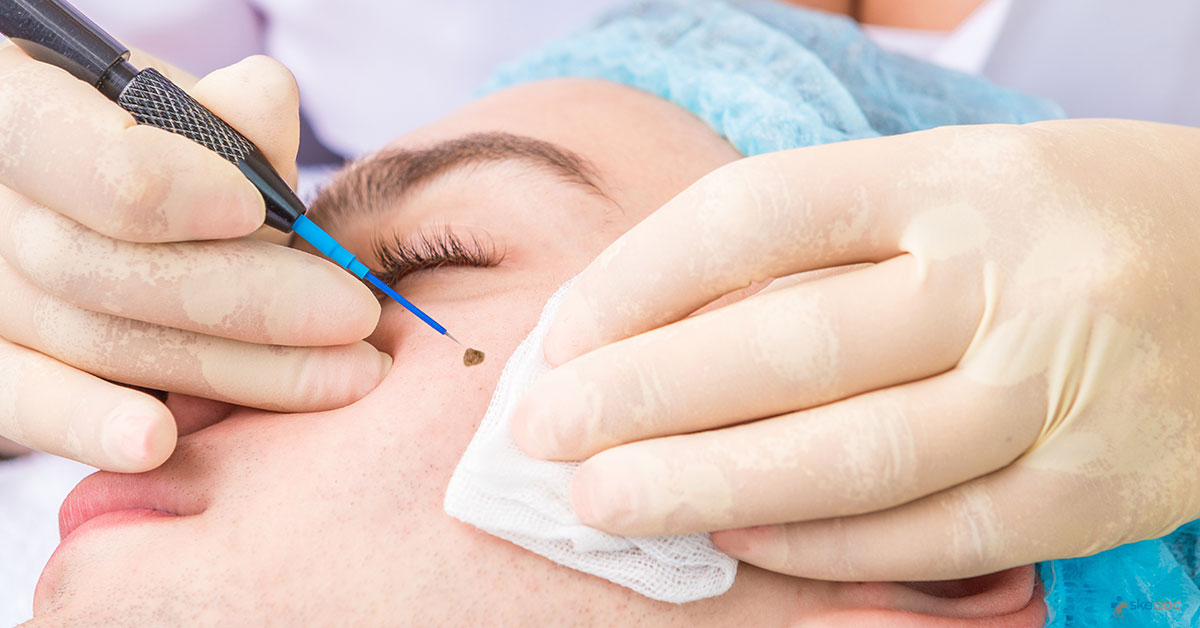Allergy
Blood Diseases
Bone & Joints
Brain
Cancer
Child Care
Cosmetic Surgery
Diabetes
Endocrinology
ENT
Eye
Gen Medicine
General Surgery
Heart
Kidney
Lifestyle
Liver & Digestive
Lung
Men’s Health
Mental health
Physiotherapy
Rheumatology
Skin and hair
Sleep Disorders
Spine
Transplant
Women Health
Thyroid
Vascular Surgery
Everything You Should Know About Mole Removal

What is Mole Removal?
Mole Removal is a procedure done to permanently remove skin growths called moles which are dark-colored spots caused due to clustering of pigmented cells called melanocytes. Moles that are confirmed to be noncancerous are removed via minor Mole Removal surgeries or interventions.
Is the Mole Removal procedure an elective or an emergency procedure?
It is an elective procedure.
Types
Mole Removal may be done as follows:
- Surgical excision: Done for moles with a deep base
- Surgical shaving: Usually done for small-sized moles
- Laser Mole Removal
- Electrocautery
Indications
It may be done for the following reasons:
- The presence of a mole results affects the aesthetic appearance
- Mole is located in a region where it is causing discomfort due to friction from clothes or daily activities
- There is repetitive injury to the mole due to its location
Contraindications & risk factors
It may not be advisable in the presence of the following features:
- Asymmetric borders
- Uneven edges
- Not uniformly coloured or is differently coloured
- Very large size
- The mole is growing in size
- Active infection is present
Investigations before the procedure
No specific investigations are required before a Mole Removal surgery.
Preoperative advice
Before performing a Mole Removal procedure the following are done:
- Risks and benefits of the procedure are explained
- A complete review of medical history is done
- Advised to avoid makeup and cosmetics in the region of the mole to remove
Intraoperative details
Anaesthesia: A Mole Removal procedure is done under local anaesthesia.
Duration: This procedure can last between 5-45 minutes.
Details of procedure
The area to be treated is thoroughly cleaned and a local anaesthetic is given. Depending on the procedure the following are done:
- Surgical shaving: A scalpel is used to remove the mole and a small amount of tissue underneath. Either electrocautery to burn or liquid nitrogen to freeze is applied to prevent bleeding. No stitches are applied and the region is covered with a bandage
- Surgical excision: This is usually done for moles with a deep base, and also for moles in cosmetically sensitive areas where minimal scar formation is desired. The entire mole right down to its depth along with some surrounding skin is removed. Depending on how deep the excision is done either absorbable sutures (if very deep) or non-absorbable sutures (if not very deep) are applied
- Laser Mole Removal: Suitable for superficial flat and some raised moles and non-cancerous moles; the mole is removed using medical-grade YAG lasers
- Electrocautery: Suitable for superficial moles and may be done as an alternative to laser cautery and is done using a current to burn off the mole
Post-operative advice
Mole Removal is done as an outpatient procedure and no specific monitoring or management is required.
Common post-procedure complaints:
- Slight discomfort at the site of surgery
- Redness or burning of skin at the site of surgery, which usually subsides in a few days
Review: If non-absorbable stitches are placed, they would need to be removed with a follow-up visit.
Role of diet/ Exercise/ Lifestyle changes
Some measures that need to be taken after a Mole Removal surgery include:
- Cleaning the surgical site and keeping it bandaged until it has healed completely or as advised by the specialist
- Monitoring for the reappearance of the mole after the procedure; if the mole reappears, an immediate medical consultation is warranted
Complications
Some complications associated with Mole Removal include:
- Formation of a scar
- Infection of the surgical site
- Excessive bleeding
- Regrowth of the mole
Prognosis
The prognosis for this procedure for noncancerous moles is generally excellent.
When to contact the doctor or hospital? / Indications for hospitalization if required?
It is advisable to seek medical attention if there is fever, severe pain, or discharge from the site of surgery after a Mole Removal procedure.
Suggested clinical specialist/ Departments to consult for this procedure
Dermatology.
Was this article helpful?
YesNo




